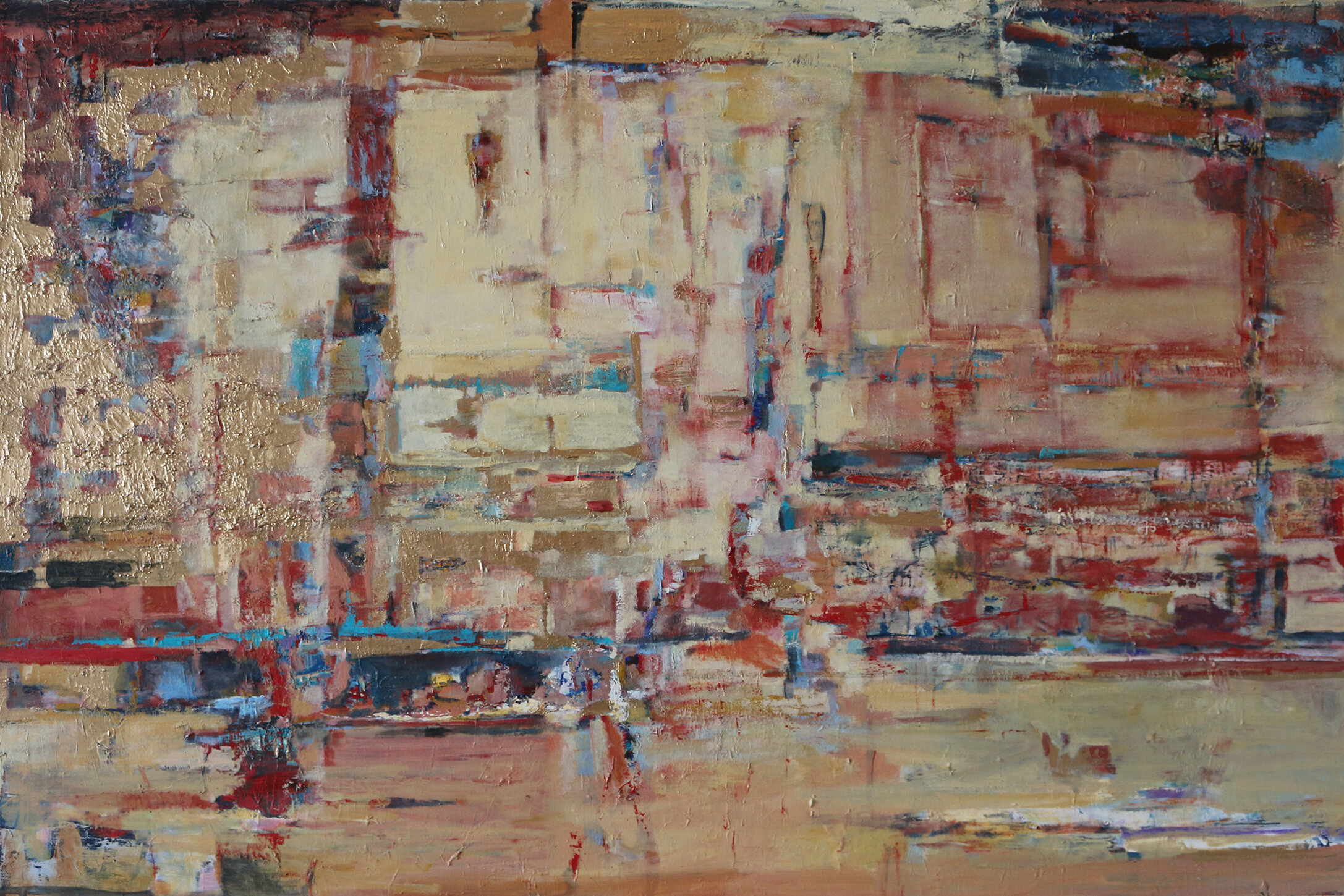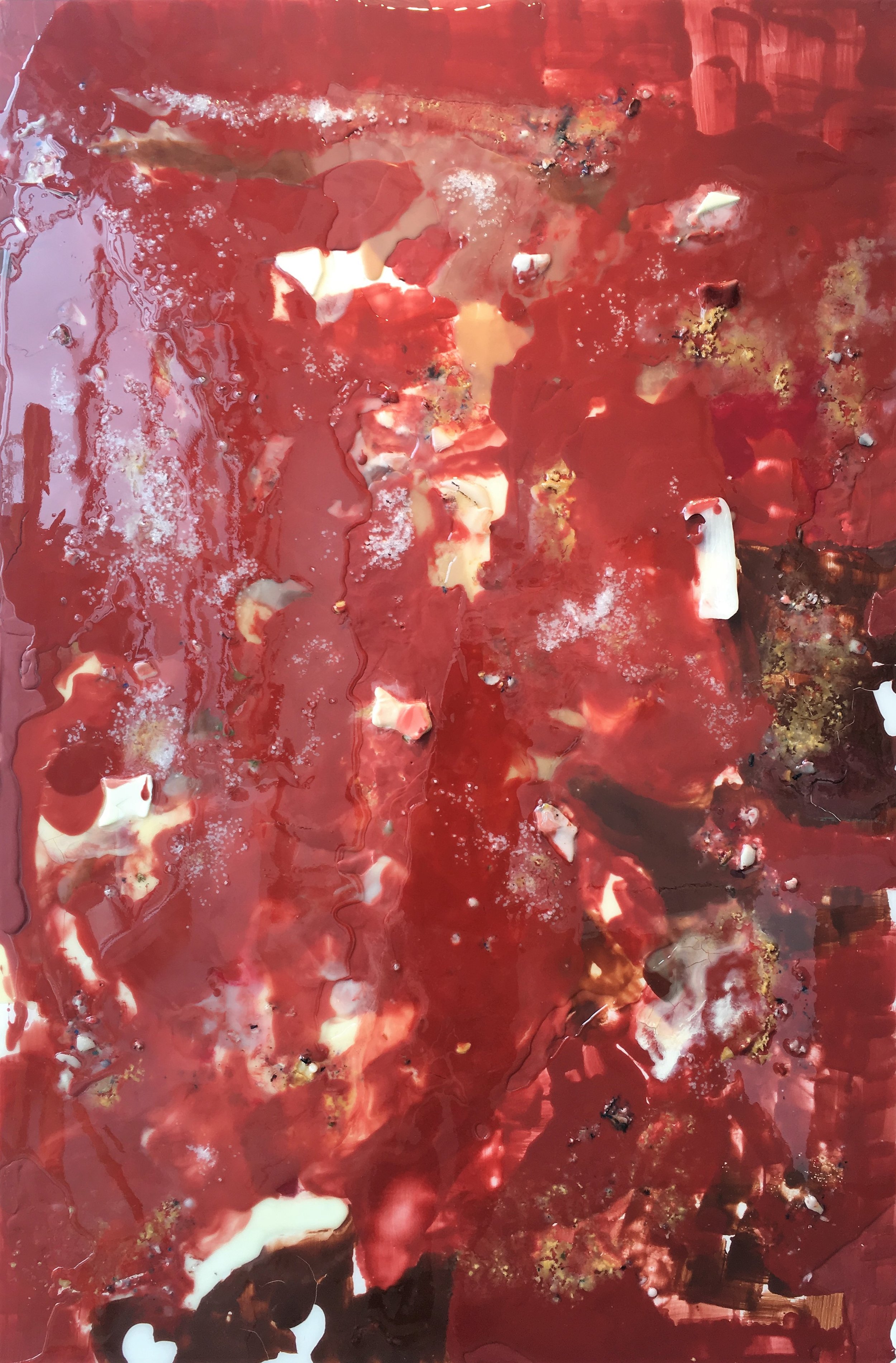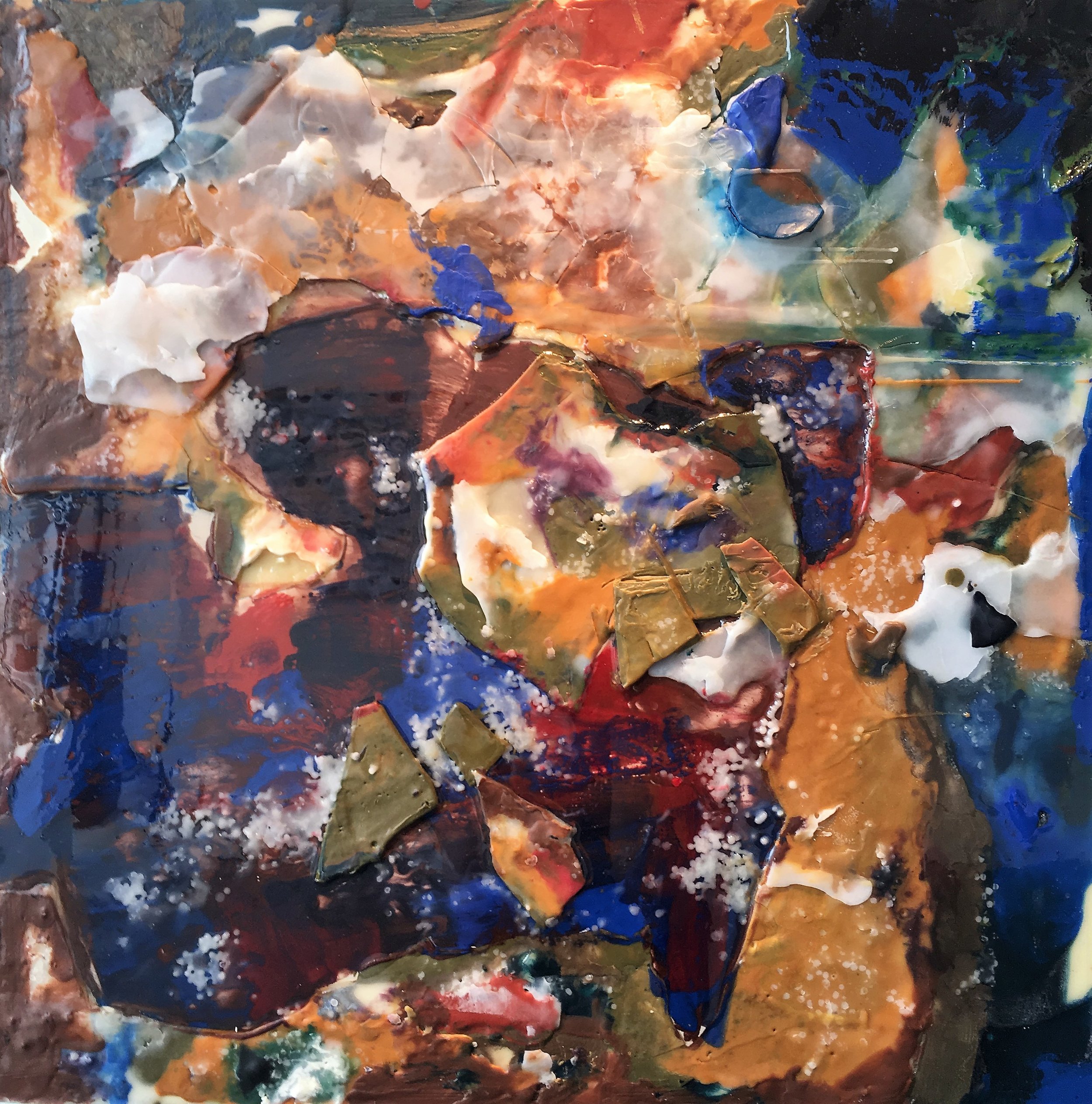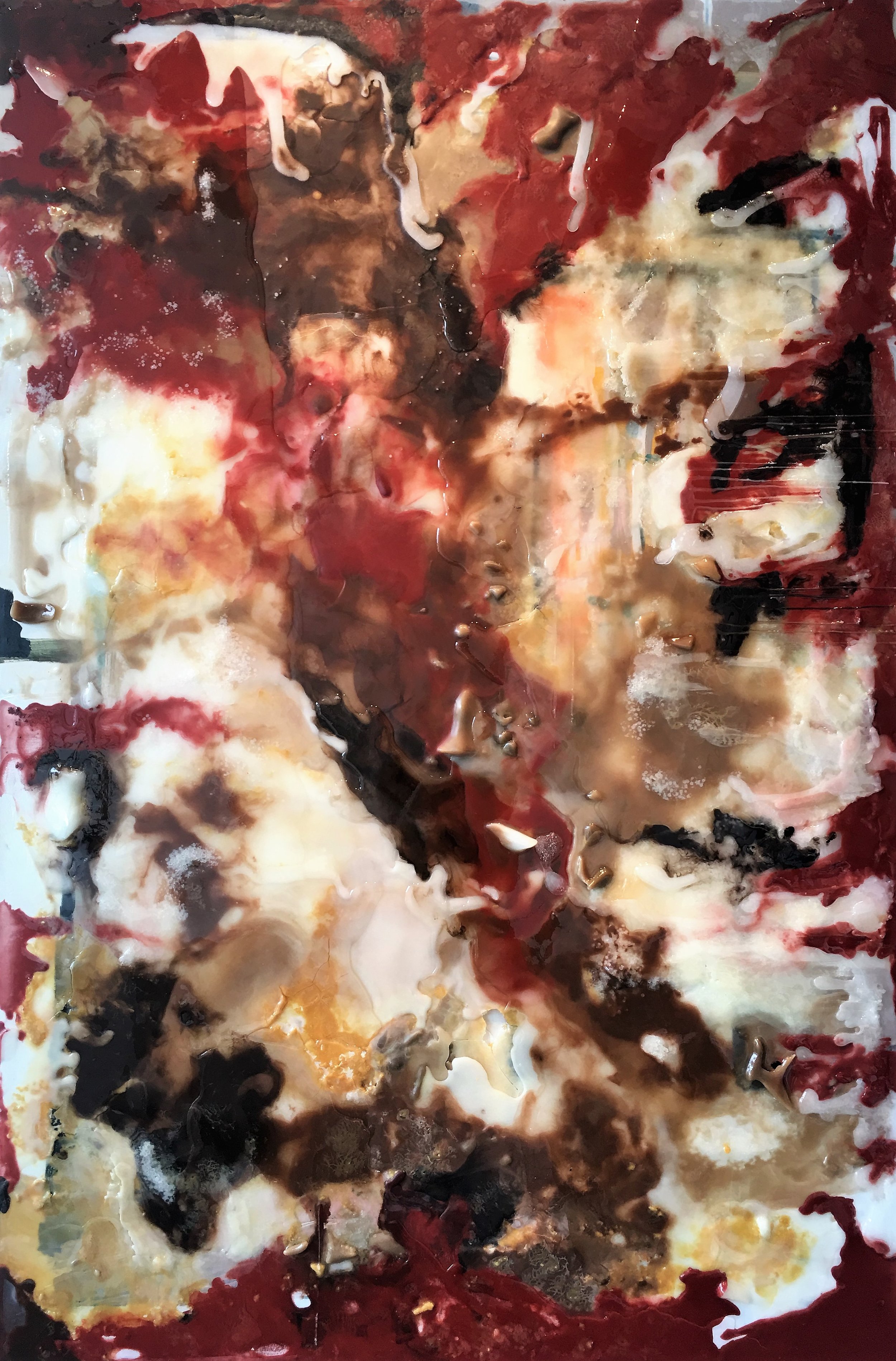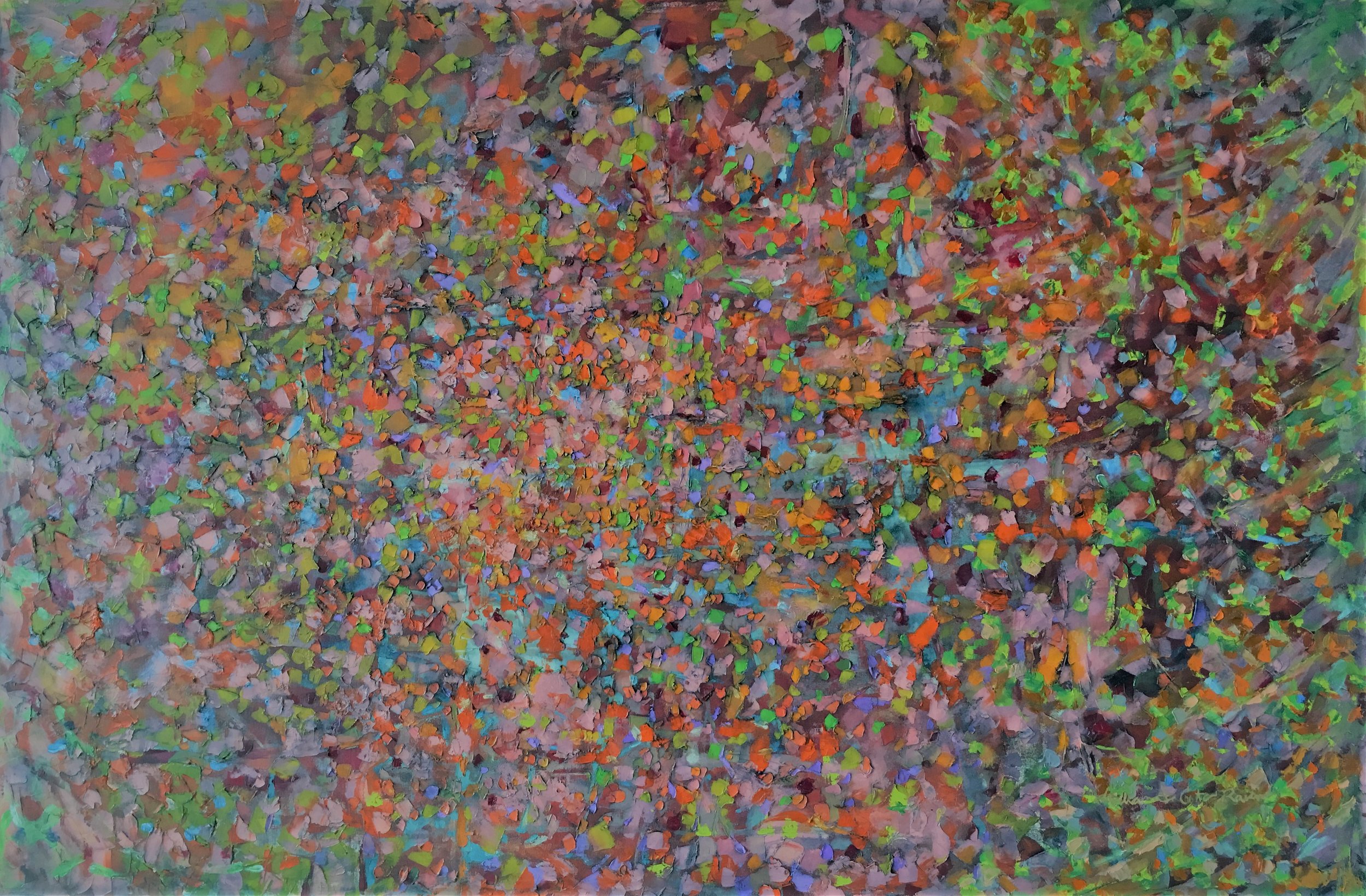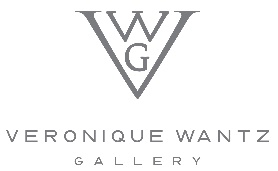Who is, or has been, the biggest influence on your art?
Many artists have influenced my work over the years, but the biggest influence is probably Gustav Klimt. I have always been fascinated by the complexity of the Visual thinking behind his masterpieces. For instance, the way he used to play with background and foreground in his images has an incredible resonance with the principles of how our perception works according to the Gestalt Psychology.
Which of your works is your personal favorite and why?
I love all of them, but the series of sculptural paintings called The Pompeii Series is probably one of my favorites. I love these artworks so much that they are hung all over my house! Every time I look at them I feel that art helped me to create an unique channel to share with people, at least, a little bit of the ancient blessed energy I felt in Pompeii!
Of all your travels, which city or place inspires you the most? Why?
There are so many! Travels are an endless source of inspiration for me. Currently, I am deeply in love with the energy and mystery of Santorini Island. There, the archeological site of Akrotiri, where one of the most important centers of the Minoan civilization took place, immediately called my attention. I found out that specialists call this site “the pre historical Pompeii”, so it’s no surprise that this is the subject of a new series of sculptural collages I am working on!
What inspired you to study to become an artist?
Art has always been my natural way of expression. At the age of four years old, my parents gave me my first set of watercolors and an easel, since I was painting and drawing on the walls all over the house! Their understanding of my need to create on walls was a great encouragement for me. I felt free to explore my creativity. Later on, around 8 years old, my mother showed me a painting by Italian Master Rafael Sanzio, which made a huge impact on me and allowed me to discovered the art of painting. From that moment on, I started to take art courses and have never stopped. By the time I was ready for college, though, I chose to study Psychology, to better understand the creative process. After graduation, my work as clinical psychologist led me to study Art Therapy, which led me to study Art History that led me to a Master course in Fine Arts.
How long have you been working with encaustic and wax?
I have been working with encaustic wax over 18 years or so. Wax continues to fascinate me with its versatility.
Where do you get your inspirations for your work?
The human soul is the great source of inspiration for me, so the connections between art and psychology has been the constant subject of my works. My series of abstract landscapes, for instance, are a collection of memories, feelings and impressions gathered during my travels. Lately, my scope of interest has broaden to the way humans are impacting their environment. In series, like “Gaia” or “Atlantic Ocean”, I talk about endangered species and climate change.
What is your creative process like?
It sure varies a bit from series to series of works. But I’d say that, generally, I experience something that impacts me to the point that I want to share my perceptions of it. Then it follows a long period of incubation in which I give myself, my creativity, time to process that experience. When diffused, sensations start to get more intense, and I feel that there is something in me that is looking for means of embodiment, I feel unsettled and know that this is the go-to-the-studio-and-start-to-work sign! Then, it’s work, work, work, alternating moments of flow and struggles until the completion of the piece!
What are the most important factors you consider when you create your work?
Strength, honesty and uniqueness. My art needs to first move me, for, if it moves me, chances are it will touch people as well.
How has your practice changed over time?
I am an unsettled artist and have explored a variety of art forms during my life. In addition to multiple painting techniques, I have explored video art, visual poetry and wearable art. In the 1990s I used to work with fabric design for the fashion industry in Brazil, which was when I discovered the ancient art of Batik and felt in love with wax. Wax turn out to be core material of my art. Around 2004, while doing a research about memory (the central subject of my work) for my master degree, I come across another ancient wax-based art form - encaustic, and it changed my work completely. My art became much more tridimensional, I created several encaustic sculptural paintings and sculptural collages (in addition to continuing with my colorful oil painting projects).
About an year or so ago, I decided to expand the boundaries of my work once more. During one of my travels I saw an amazing amber jewelry piece that vision just rang a bell! Amber being an natural resin related to fossilized particles, inspired me to add industrial resin to my works and to explore this technique in multiple ways. Long story short, in addition to working with resin, oil and wax on my new paintings, I resumed my work with wearable art and started to create beeswax-and-resin jewelry pieces.
What do you think is the most difficult aspect of making work? Why?
Well, I believe there are many challenges and difficulties in dealing with art. In my opinion, understanding and respecting our own creative process in order to keep our practice truthful to our artistic voice is a big one. The more successful an artist becomes, the bigger is the pressure of the art market. This might be hard to deal with. Our purpose as artists and our artistic identity need to be very clear to ourselves, or else our work looses its strength and its soul.
What is something quirky or unexpected about you that most people don't know?
Most people do not know that I have always been passionate about the Outer Space. As a teenager I used to take several amateur courses on basic Astronomy and was actually planning to study Astronomy in college! Astronomy and Astrophysics still fascinates me a lot, I still consistently read about it. Lately, I came to understand that this is a type of spiritual connection with the universe and its mystery and continuously opens my mind to complexity.
